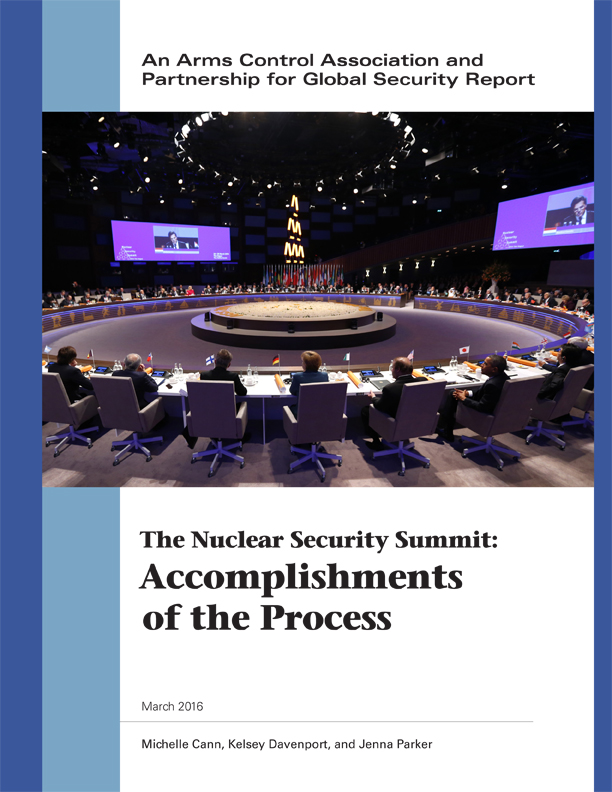This final report in a series of six is a cumulative snapshot of what states have individually done to strengthen nuclear security during the course of the Nuclear Security Summit Process (2010 – 2016).
The Nuclear Security Summit (NSS) process, initiated by U.S. President Barack Obama in 2009, will conclude in April 2016. It has brought together more than 50 world leaders at four heads-of-state level summits—Washington, D.C. (2010), Seoul (2012), The Hague (2014), and Washington D.C. (2016)—in the fight to minimize the risk of nuclear and radiological terrorism through national actions and international cooperation.
The NSS pioneered the use of regular, progressive, voluntary nuclear security commitment making by states and groups of states, thereby creating an effective new tool for continuously improving the global nuclear security regime. The NSS process has resulted in the recovery or elimination of more than 1,500 kilograms of highly-enriched uranium and separated plutonium, the establishment of dozens of new training and support centers, and many updates to national laws on nuclear safety and security. Notwithstanding these successes, significant work remains to strengthen the underdeveloped international system for governing nuclear security, and it is unclear how the summit’s valuable commitment-making tradition and political momentum will be sustained after the summit's end.
Read the full report here.
Read the press release here.
See the centerfold graphics here.
Read the one-pager here.
Read PGS’ six years of NSS Analysis here.


